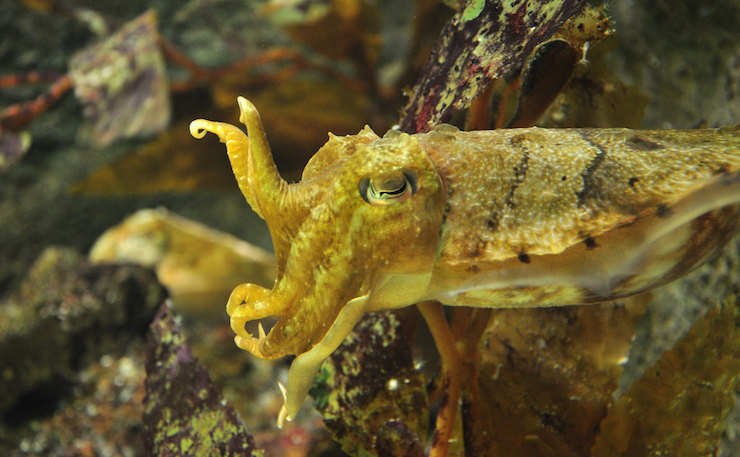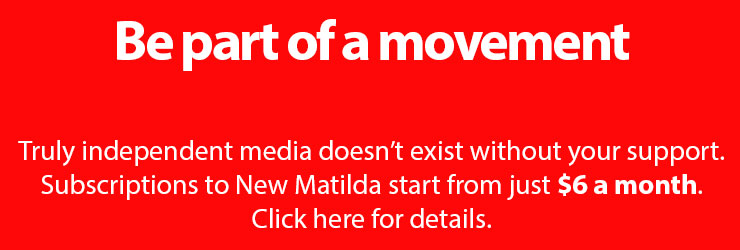Energy providers say they want to see a competitive marketplace, but the truth is they’re not so keen on having to compete for profit, writes Rod Campbell.
Last weekend I went snorkelling with Australian Giant Cuttlefish and watched them mate in the waters off Whyalla, South Australia. These threatened, intelligent creatures get hot and steamy at this time every year in water that is cold enough to shrivel the tentacle of any non-cephalopod.
This amazing sight occurs just next to a Santos gas terminal, over the bay from the Arrium steelworks. Overhead the wind was howling, but the cuttlefish carried on, oblivious that wind, gas, and smelters were all factors in the current mudstorm over electricity prices and energy in South Australia.
This week electricity prices have been high in South Australia and big businesses, including Arrium, don’t like it. A bunch of them marched down to the SA Treasurer’s office and complained. Treasurer Tom Koutsantonis was forced to “ask” (and presumably pay) Pelican Point power station, owned by French and Japanese companies, to dust off their gas-fired generators.
South Australians deserve a sensible discussion of these issues, but instead they’ve had nothing but hysteria blaming these problems on their nation-leading wind industry. So let’s have a look at what is actually happening in the SA electricity market.
Neither the Treasurer, Arrium, nor anyone else has bothered to explain to SA taxpayers why Pelican Point wasn’t fully operating in the first place, since it is the most efficient, lowest emission thermal generator in Australia. It has been on go-slow for several years because it couldn’t compete with low electricity prices and had “reputedly” sold its gas off to the export market.
Pelican Point’s owners were able to sell their gas to the export market because several gas companies, including Santos, have built gas export facilities in Queensland that link Australia’s eastern gas market to higher-priced Asian markets, with the first exports in 2014.
The link to the export market is one of the main causes of higher gas prices and Pelican Point’s go-slow. Santos knows this. In fact they claimed that they weren’t too worried about profitability of their export terminal, because they really wanted to use it to increase domestic gas prices all along.
Like most things about electricity markets the following graph is a little hard to understand. It comes from the Australian Energy Market Operator. The important lines to watch are the green line, which is wind energy generated, and the red line with the huge spikes at one end, which is the 30 minute wholesale electricity price.

Notice how the spikes occur when there is a drop in wind energy, especially if there is also an increase in demand, the blue line. Why is this so?
Well, it could be that it is physically hard for other generators to compensate for the variability of wind generation. Or it could be that there just aren’t many non-wind generators competing against each other and they are able to force up the price for small intervals to make lots of money. Or maybe both.
Either way, prices spike for short periods of time. If these price spikes could be eliminated, customers would pay lower prices and incumbent gas generators would not make so much money.
As it so happens, there is a proposal to try to eliminate these price spikes currently before the Australian Energy Market Commission. The proposal was put forward by Sun Metals, a zinc smelter, which argues that when price spikes occur, large electricity users like it could turn off for short periods and reduce the spike…if the market paid them to do so. Battery storage would also benefit from this change, as batteries can turn on instantly, also reducing the spike.
Notice this change has been proposed by a metal smelter. Kind of like Arrium. And did Arrium make a submission on this potentially beneficial change? No. Did the other businesses that put the hard word on Treasurer Koutsantonis? No. In fact, some belong to a lobby group that actually opposes the change, arguing:
[Even though] implicit in the proposal is an increase in efficiency of the market….[our lobby group oppose the change because]there will be significant costs incurred by many Market Participants (sic).
In other words, even though this would bring about a more competitive market and lower prices, it would cost some users money in the short-term regardless of the long-term gain.
This pretty much sums up the attitude of a lot of Australian big business, especially those in energy markets, especially in South Australia. They like to talk about competitive markets, but don’t want to compete in them, particularly not with new technologies and ideas that would put them at risk. It’s far better to attack the newcomers with lobbyists and demand a hand out from governments.
Australian Giant Cuttlefish constantly change strategies, colours and shapes in their serious competition to secure a mate. Everyone should go to Whyalla to see this one day, especially Treasurer Koutsantonis and the Australian Energy Market Commission. It will be the first example of serious competition they’ve seen in a while.
Donate To New Matilda
New Matilda is a small, independent media outlet. We survive through reader contributions, and never losing a lawsuit. If you got something from this article, giving something back helps us to continue speaking truth to power. Every little bit counts.





